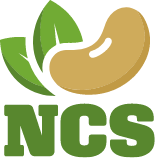The PGRO website is the best source of information for growing pulses in the UK. See the online Pulse Agronomy Guide at https://www.pgro.org/pulse-agronomy-guide/
Spring combining peas are very versatile with most current varieties being semi-leafless with high yields and improved standing ability. While heavy rainfall and wind in June and July can result in tall crops that are prone to lodging, growing peas on lighter soils reduces lodging risk. The tolerance of peas to drought stress allows good yields in low rainfall areas. Spring peas mature early enough to allow production as far north as central Scotland.
Winter field beans are the classic pulse crop for heavier land that is difficult to work in the spring. Though the preferred method of establishment is by drilling, ploughing-in remains an option. Early crop development reduces their susceptibility to early summer drought.
Spring field bean yields can fluctuate with the success of the crop linked to early summer rainfall. In dry years, yields can be disappointing, but in wet years much
better results can be expected. Vulnerability to drought can be reduced by growing on more moisture-retentive soils and by sowing early. Spring beans are now being successfully produced in arable areas of Northumberland and southern Scotland with good yields. In these higher rainfall areas, the late maturity of spring beans needs to be considered and early maturing types are now available. Premium markets exist for pale hilum beans for export to the Middle East for human consumption and for small, round-seeded samples for pigeon feed.
Other protein-rich dried pulse crops can also present opportunities for growers, including Soya, Navy Beans and Lupins.













Discussion
Great article on innovations in pulses from Future of Food Production at https://btpubs.co.uk/publication/?i=765176&p=52&view=issueViewer